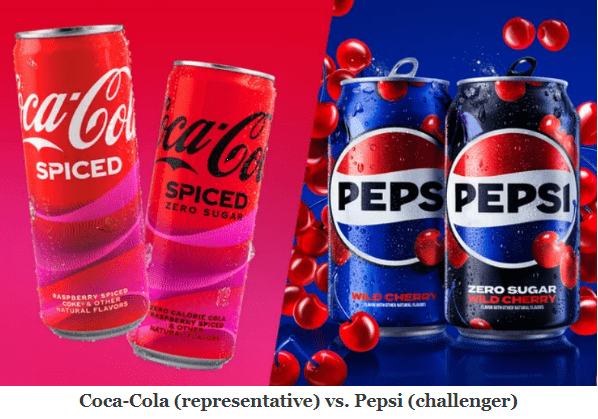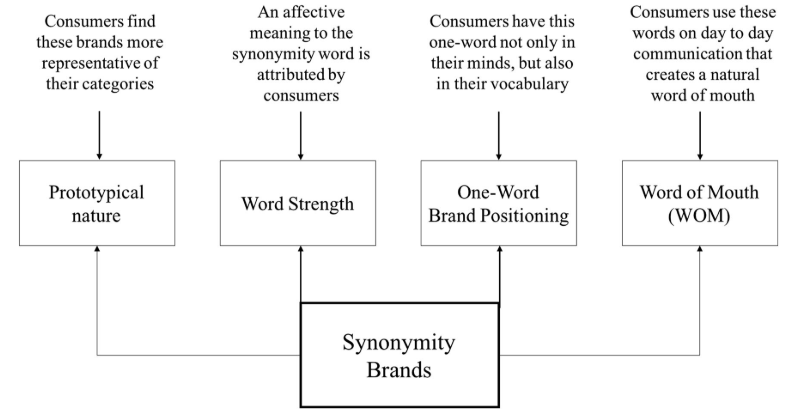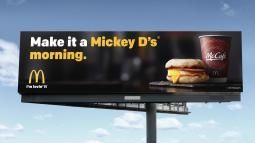Brand Naming In A Nutshell
Brand naming is the process of selecting a unique and memorable name for a product or a service to help customers differentiate it from other alternatives.
Undoubtedly, a brand name is the first point of interaction between customers and the brand. Hence, an imaginable name can effectively communicate the brand’s core values and identity, and create initial impressions to its target customer.
A well-chosen brand name can enhance the halo effect just as a good first impression with people can have lasting benefits in building positive brand associations and relationships.
For example, Sullivan (1998) compared 2 different brand names of twin automobiles manufactured in the same plant with similar physical and functional attributes.
Surprisingly, customers were willing to spend extra for the name which triggered a sense of prestige even though they knew the vehicles were functionally identical. This experiment shows that the halo effect of brand names is so significant that it can shape how people evaluate and perceive brands.
Key Characteristics of Memorable Brand Names
1. Feminine brand names boost brand performance
The first finding about brand naming comes from a research paper “Is Nestlé a Lady? The Feminine Brand Name Advantage” in which researchers explore whether brand names with feminine linguistic traits, such as length and vowel endings, can influence consumer attitudes and choices.
Brand names with feminine characteristics include:
- Length: feminine names are typically longer than ordinary names (>2 syllables)
- Sound: feminine names end with a vowel sound (e.g. Nestlé, Coca-Cola)
- Stress: the stress often falls on the later syllables
After analyzing top brands in the Interbrand list with different investigations, the research shows that feminine brand names are perceived as warmer and more trustworthy than masculine names.
Surprisingly, this perceived warmth leads to more favorable brand attitudes and higher choice share, especially in hedonic product categories that people buy for emotional satisfaction such as luxury and fashion.
For brands in the process of naming their new products or services, it is advisable to include feminine linguistic characteristics to better associate themselves with positive feelings and perceptions. This particularly works very well for brands serving a broad customer base or providing highly hedonic products.
On the other hand, for brands that want to promote a masculine image to target males/boys, using stop consonants such as ‘k’, ‘t’, ‘p’, etc. can be highly effective according to a study on how consonants enhance gender perception. Some typical examples include Gap, Dunkin’, Nike, Kodak, etc.
2. Relevance – Connotation – Pronunciation
Relevance in brand naming refers to how closely a brand name aligns with the descriptive information of the product or service it represents. For instance, “Burger King” effectively communicates its association with fast food.
Yet, relevance is not always synonymous with selecting a generic brand name like Burger King or Dunkin’ Donuts. Relevance can be enhanced through marketing communications and the social context in which the brand name is featured.
For example, while Coke or Coca-Cola becomes representative of the Cola drink in general, Pepsi still creates a sense of relevance by engaging the young generation and becoming a prime example of the Cola drink for the young generation with its communications revolving around the context of parties and youthful lifestyles.

Connotation, on the other hand, reflects the underlying meanings and associations evoked by a brand name. Facebook implies vague attributes or benefits related to the social media platform allowing people to create a booklist of faces. In other words, connotation facilitates customers’ perception of what the brand represents.
Believe it or not, selecting a descriptive brand name can lead to higher brand recall since people find it easier to retrieve these brand associations and symbolic meanings from their memories.
Pronunciation represents the ease of difficulty with which a brand name can be spoken or articulated. Easy-to-pronounce names such as Gap, Nike, and Adidas are more likely to be remembered and preferred by customers due to their familiarity and top-of-mind awareness.
Since human beings always use heuristics to reduce effort when processing information, brand names that are easily pronounced will be likely recalled first, especially under a low-involvement situation.
3. Turn brand name into a verb – Brand synonymity
According to a study on Brand verbs in 2019, brand synonymity is defined as the phenomenon where a brand name becomes a verb or synonym used by customers to describe their actions or experiences related to a product category.
A prime example is the verb “google” or the phrase “Let’s google it” which has become synonymous with searching for information online, regardless of the search engine used. Other examples include “xeroxing” for photocopying and “Band-Aiding” for applying adhesive bandages.
Research shows that a brand must become a leader in its category to ‘verbify’ its name. In other words, the brand name should be highly prototypical and representative of the category no matter where it shows up.
It is believed that brand name synonymity is formed by 4 primary characteristics:
- Prototypical nature: the brand leads or even dominates the market (e.g. Google)
- Word strength: the name is memorable, and evokes an affective meaning to customers (e.g. a sense of scare: Liquid Death; a sense of optimism: Sun Light, etc.)
- One-word positioning: the brand owns a specific word in customers’ minds (e.g. Volvo = safety, Coke = happiness)
- Word-of-mouth: customers are driven to use the brand name as a verb so frequently that it becomes natural in daily conversations (e.g. Let’s Google it!)

Even though brand name verbification is only applicable for brands that are pioneering a new category, the chosen name should be brief, and easy to pronounce to enhance ongoing word-of-mouth and become a customers’ favorite word in their social conversations.
Besides, maintaining congruence between the brand name and its associated verb is essential for sustaining brand leadership perceptions, as the lack of closeness can lead to the brand becoming generic or losing relevance.
4. User-generated brand nicknames should be facilitated
Consumers who often use nicknames for their favorite brands in social conversations are perceived as emotionally attached to the brand, which makes their information more credible and authentic.
According to a study on Consumer Brand Nicknames and Authenticity, brand nicknames like ‘Maccy D’s’ or ‘Mickey D’s’ for McDonald’s or ‘Chevy’ for Chevrolet significantly enhance perceived information authenticity in user-generated content (UGC). This is also known as inferred brand attachment (IBA) in which customers use their behavior or language to signal their intimate relationship with the brand.

Hence, brands should proactively persuade customers to embrace and adopt an informal and friendly way to call them in user-generated content like reviews, testimonials, and social media posts.
Yet, brands need to distinguish between user-generated content (UGC) and firm-generated content (FGC), as the authenticity boost from nicknames is more prominent in consumer-driven contexts.
Around 88% of people believe that nicknames are mostly used by loyal customers in informal settings, which means that using nicknames in professional contexts such as advertisements or brand conferences may be counterproductive and inauthentic.
For instance, Coca-Cola initiated a campaign with the theme “Coca-Cola: Ask for it by its full name” to dissuade consumers from using the nickname “Coke” with the fear that the nickname would dilute their brand image in the long run.
Academic Sources for this blog:
Bao, Y., Shao, A.T., and Rivers, D. (2008) Creating New Brand Names: Effects of Relevance, Connotation, and Pronunciation. Journal of Advertising Research. 48(1), pp.148-162.
Guevremont, A., and Grohmann, B. (2015) Consonants in brand names influence brand gender perceptions. European Journal of Marketing. 49(1/2), pp.101-122.
Kumar, S.M., and Jayasimha, K.R. (2019) Brand Verbs: Brand Synonymity and Brand Leadership. The Journal of Brand Management, 26(2), pp.110–25.
Pogacar, R., Angle, J., Lowrey, T.M., and Shrum, L.J. (2021) Is Nestlé a Lady? The Feminine Brand Name Advantage. Journal of Marketing. 85(6), pp.101-117.
Zhang, Z., and Patrick, V.M. (2021) Mickey D’s Has More Street Cred Than McDonald’s: Consumer Brand Nickname Use Signals Information Authenticity. Journal of Marketing. 85(5), pp.58-73.
Sy Chu
As an analytical and creative marketing enthusiast skilled in customer analysis, content research and brand management, my passion is help businesses gain insights into their brand and marketing strategies to drive impactful outcome to their success.

Very clear and detailed information, thanks for sharing!